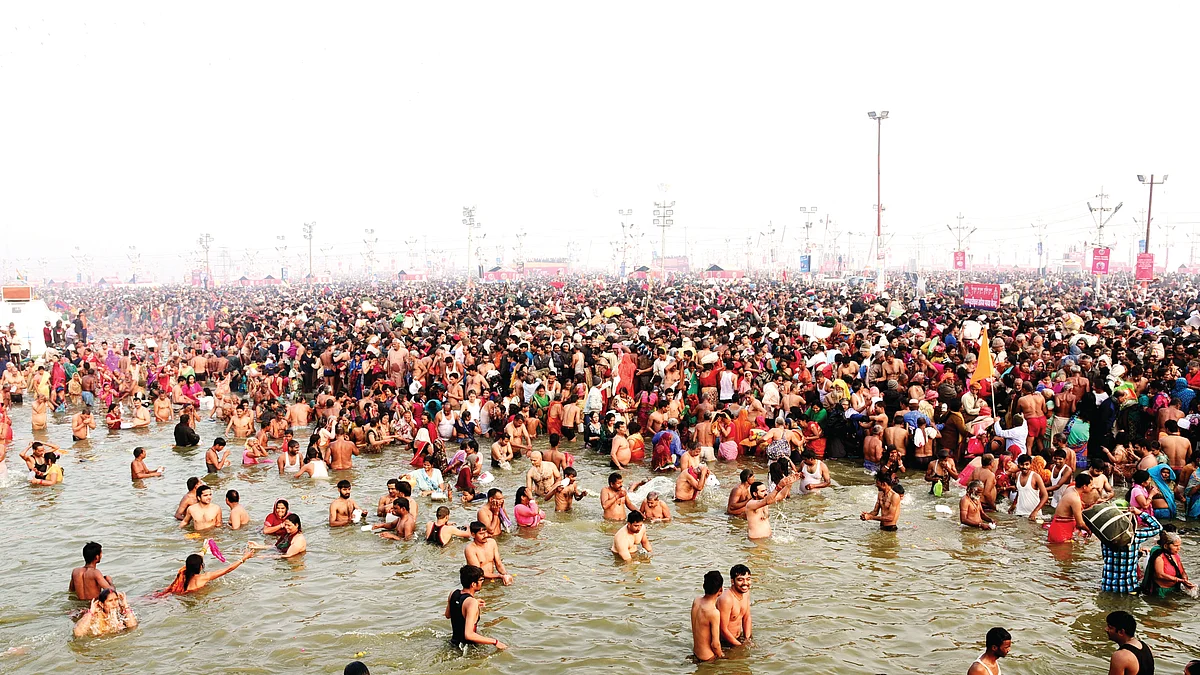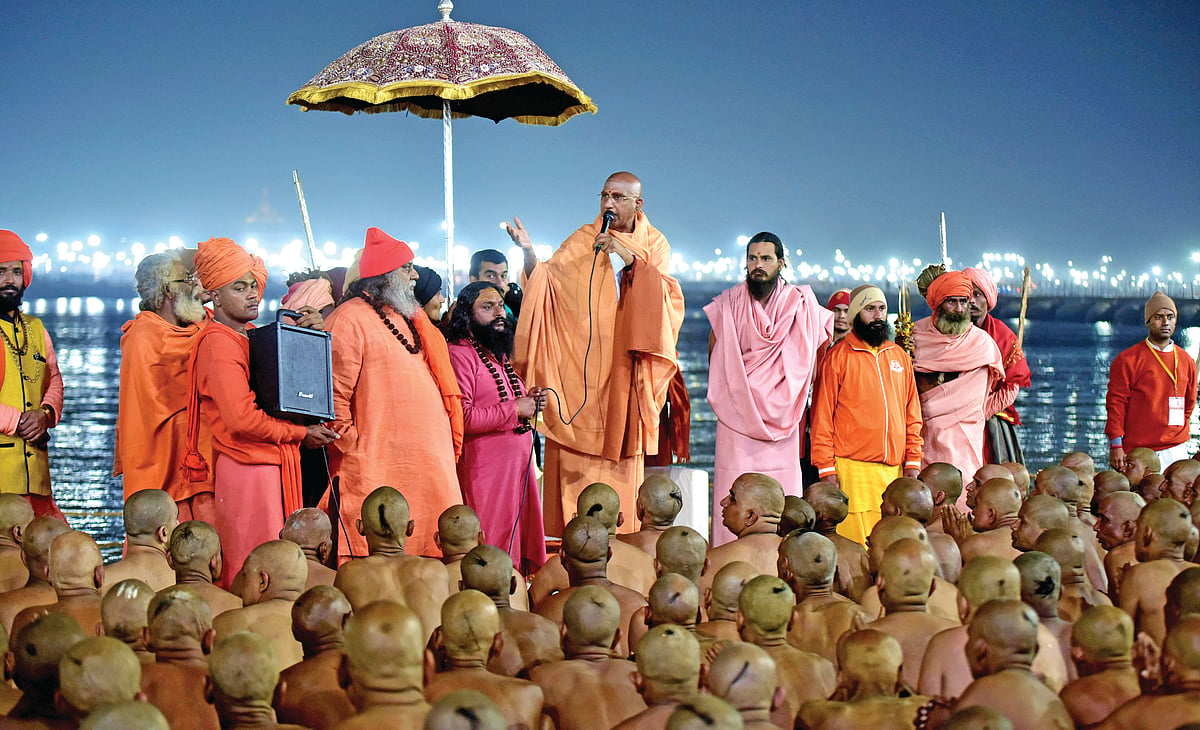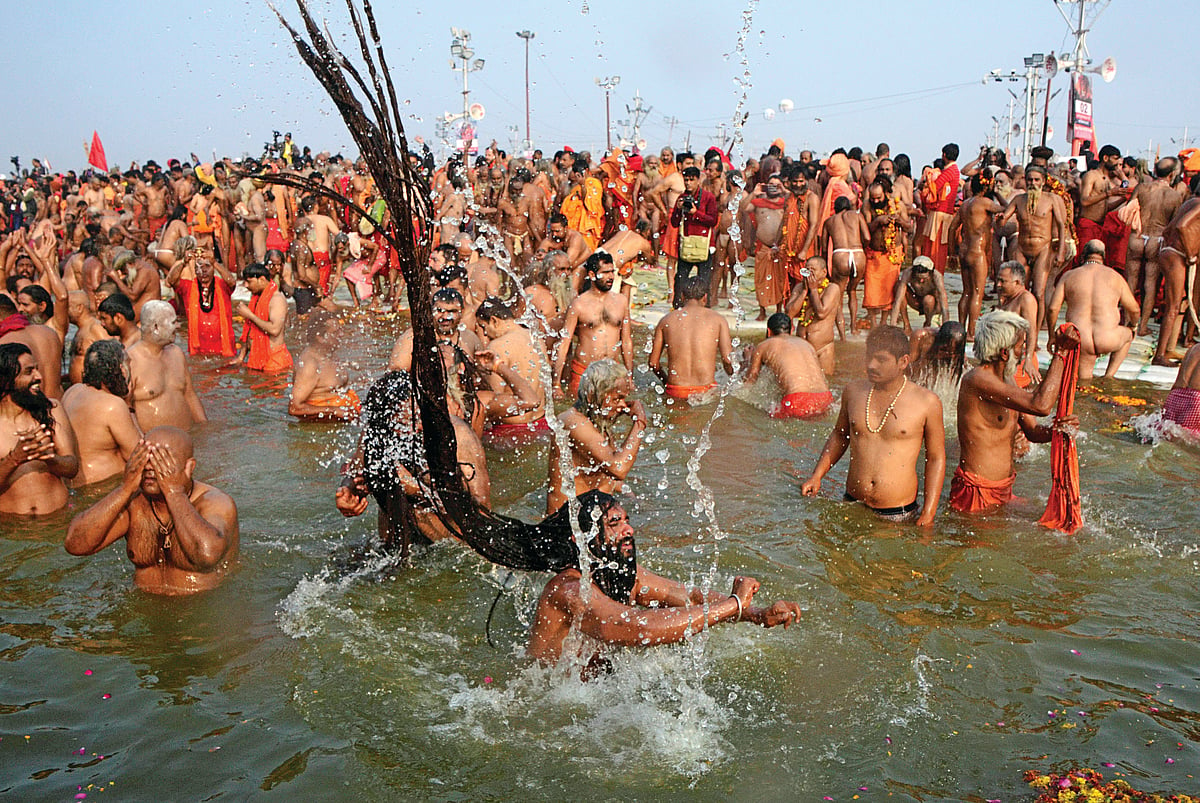The Kumbh 2019: A political and marketing spectacle
Tulsidas had written that ‘gods, demi-gods and ordinary human beings bathed in the Triveni with great reverence’. But this year the PM, Govs and CM turned the pilgrimage into a tourist attraction

Prime Minister Narendra Modi may not have been the first Prime Minister to attend the ‘Kumbh’ Mela ( Jawaharlal Nehru had taken a dip in 1954 and Indira Gandhi in 1977) but he certainly is the first Prime Minister to have his cut outs, supervise the arrangements and then return for a dip. He is also the first Prime Minister to wash the feet of five ‘Dalit’ sanitary workers and turn the event into a television spectacle.
TV channels and mainstream media dutifully reported the event but what escaped them was the plight of 20,000 sanitary workers on daily wages, who had been pressed into service to clean around 120,000 toilets put up for the visitors. Their job also included cleaning several thousand cut outs of the Prime Minister and the Uttar Pradesh Chief Minister.
The media also ignored the protests at Kumbh by Safai Karmacharis, who complained of long hours and relatively low wage of ₹295 per day promised by contractors. Activists like Dinesh and Hiralal besides poet and activist Anshu Malviya took up the issues with the authorities in vain. Demanding payment of ₹600 for the 16-hour long shifts, they felt, was reasonable. And with the Government having budgeted ₹4,200 Crore for making arrangements (as against ₹900 Crore) for the ‘Purna Kumbh’ in 2013, there was no reason why the demand could not be met, they argued.
But while the authorities did not act on assurances that they would look into it, the police picked up the activists and detained them. They were threatened with the National Security Act for instigating the sanitary workers. They were finally let off with a warning and disgruntled sanitary workers went back to work. This time the Kumbh, quipped an old resident of Allahabad, came as a windfall for both contractors and officials, besides politicians of a certain kind.

More VIPs than at Davos
While the gathering of pilgrims at Kumbh was always known as the world’s largest peacetime and spontaneous gathering (with no invitations sent out), the Government this time turned it into a marketing, tourism and political spectacle. And in the process it diluted the spontaneous and the spiritual character of the gathering. Advertisements were issued liberally and bucketful of invitations were sent out to political leaders, judges, industrialists and others by the Uttar Pradesh chief minister himself.
Governors, Bollywood actors, MPs, foreign dignitaries attended the Kumbh in large numbers. The UP chief minister brought his entire cabinet and forced the ministers to take dips. He himself spent an inordinately long time in the water.
While the media duly took note of such visitors, the common man receded into the background. Residents of Allahabad renamed Prayagraj, complained that it was taking them four hours to cover a distance of three kilometres because of traffic diversions, which were clearly not applicable to the VIPs. The number of VIPs this time, they swear, were more than the number of pilgrims. An exaggeration perhaps?
Some of the sceptics reacted cynically to claims that the number of visitors till the third week of February had crossed 220 million or 22 Crore. They cheekily suggested that the authorities seemed to have included the migratory birds also and referred to an alleged tweet by the President, Ram Nath Kovind, who gushed that even migratory birds seemed to have flocked for the pilgrimage. The authorities later claimed that the number of pilgrims alone was around 17 million.

Politics and pilgrimage
Had this not been an election year, would so much money have been allotted for making arrangements? The question continues to be asked and the answer is also predictable. Never before has the Kumbh acquired such a political character as it did this time.
Not only were the Prime Minister’s cutouts put up at the cost of the public exchequer, even the so-called saints were encouraged to leave their Akharas to watch ‘Uri-the surgical strike’, the film on the 2016 surgical strike. The Akharas themselves were decked up like never before and if bazaar gossip is to be believed, the Babas were also recipients of substantial funds to make their preparations. They needed to suitably impress the visitors and an international audience. Not surprisingly, Akharas displayed more political orientation than spiritual.
The Vishwa Hindu Parishad’s camp office displayed an impressive model of the proposed Ram Temple at Ayodhya. And RSS workers were conspicuous by their presence across the sprawling 3,500 acres over which the ‘Mela’ was spread.
Some observers believe the attempt to politicise the Kumbh turned out to be counterproductive. Not only did Shankaracharya Swaroopanand Saraswati jumped the gun and announced the date when he would set off for Ayodhya, but boycott by the Akhara Parishad, which lambasted organisers for politicising a folk festival and complained that ordinary people had been pushed aside.
“VHP and RSS workers concentrated on the Kumbh over the last few months rather than focus on their strongholds in villages,” points out Anshu Malviya. The eagerness with which the state government has been boasting about urban development works initiated in Prayagraj, he feels, were also turning into a liability because of resentment beyond Allahabad and exasperation within. “They speak of widened roads, new overbridges and traffic roundabouts as if the election is going to take place only in Allahabad,” he quipped.


Follow us on: Facebook, Twitter, Google News, Instagram
Join our official telegram channel (@nationalherald) and stay updated with the latest headlines